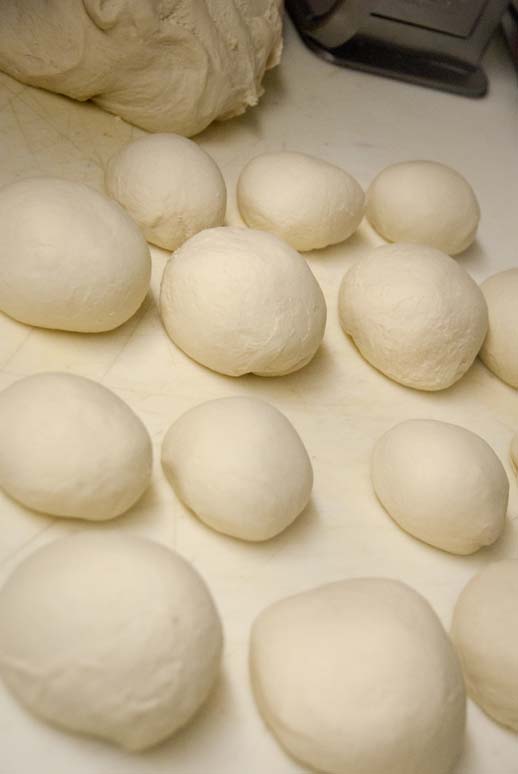 From start to finish, a sound process ensures a consistent final product
From start to finish, a sound process ensures a consistent final product
Q: I’m new to the pizza industry and I’ve heard you mention “dough management” in your articles and presentations, but I don’t understand exactly what it is.
A: Dough management encompasses everything you do with or to the dough from the time it comes off of the mixer until you actually dress and bake the dough/pizza skin. The main control mechanisms for dough management are time and temperature, which must be controlled. Without time and temperature control, you cannot have effective dough management. I have developed an outline for what I feel is the most effective dough management possible. By removing as many variables from the procedure, we can achieve excellent consistency of the dough over months, or as in my case, years of use.
This isn’t the only method of dough management that works, but I do think it gives the most consistent results over time. One place where the procedure is commonly changed is immediately after mixing. The dough is allowed to bulk ferment for a period of time before cutting/scaling and rolling/balling. The potential problem here is that the dough is now more gassy and less dense than it was immediately after mixing, making the dough a better insulator and more difficult to effectively cool within a specific period of time. By this method, if the dough temperature is even just a couple degrees too high, the dough can end up getting down stacked while the dough is still at a temperature conducive to more rapid fermentation. This sets the stage for disappointment in the morning in the form of a blown dough, or opening the dough box only to find one large dough mass rather than the individual dough balls that were originally placed into the box on the previous day.
Time is also a critical element of effective dough management. I like to cross stack the dough boxes in the cooler for varying lengths of time depending upon the weight of the dough balls in the boxes at the time. For example, in our cooler we use the following cross stack times:
- For dough balls under 12 ounces: 90 minutes
- Dough balls weighing 12 to 16 ounces: 2 hours
- Dough balls weighing 17 ounces to 22 ounces: 2.5 hours
- Dough balls weighing over 22 ounces: 3.5 hours.
These are what work for us, in our cooler. Since all coolers are different, you will need to experiment to find the times that work best in your specific cooler. Please note that these times are intended for dough balls that will be stored for not more than three days in the cooler. If you plan to hold the dough balls longer than this, we suggest adding an additional 30 minutes to each of these times.
 While on the subject of coolers, if you use a reach-in cooler, in all probability you won’t have enough room to cross stack the dough boxes so in this case just stagger the position of the boxes end to end as you place them into the cooler, this leaves the ends of the boxes open for improved ventilation and cooling. Also, since reach-in coolers do not have the efficiency of a walk-in cooler, we recommend reducing the finished dough temperature for all doughs that will be managed in a reach-in cooler to 70 to 75 F.
While on the subject of coolers, if you use a reach-in cooler, in all probability you won’t have enough room to cross stack the dough boxes so in this case just stagger the position of the boxes end to end as you place them into the cooler, this leaves the ends of the boxes open for improved ventilation and cooling. Also, since reach-in coolers do not have the efficiency of a walk-in cooler, we recommend reducing the finished dough temperature for all doughs that will be managed in a reach-in cooler to 70 to 75 F.
The time of day that the dough is made is also an important consideration in effective dough management. Due to traffic in and out of the cooler during the day (working hours) we suggest that the dough be made towards the end of the day when the traffic volume is less, allowing the cooler to operate more efficiently and at a lower, more consistent temperature.
Another way to look at effective dough management — time + temperature = consistency.
Tom Lehmann is a director at the American Institute of Baking in Manhattan, Kansas.

 From start to finish, a sound process ensures a consistent final product
From start to finish, a sound process ensures a consistent final product





